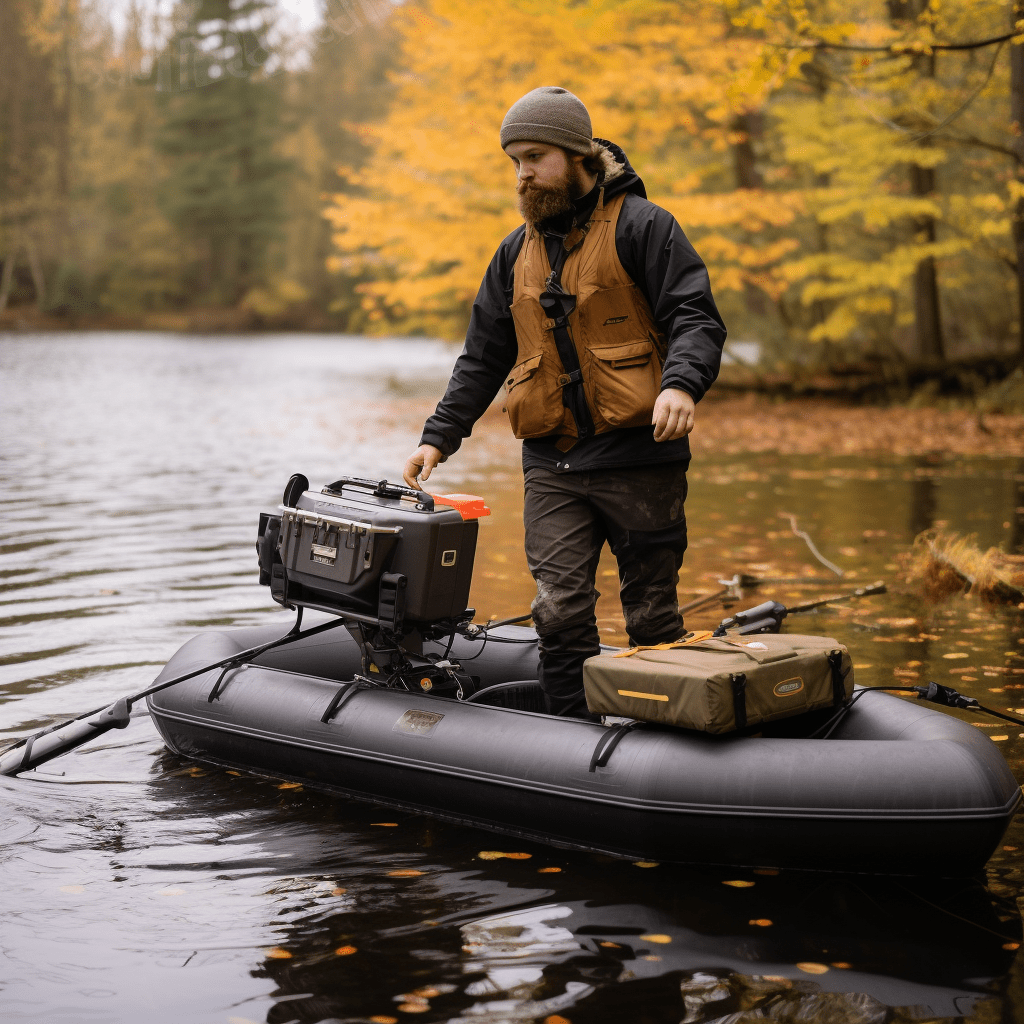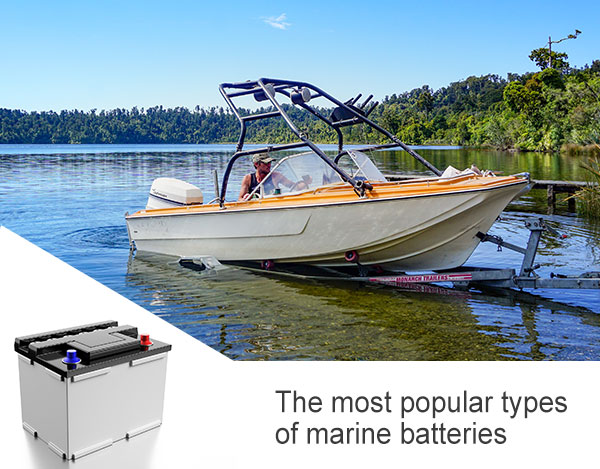A Guide to Battery Selection for Marine Outboard manufacturer
In modern fishing boats and boat outboard manufacturers are based on diesel and lead-acid batteries to produce propulsion equipment, diesel as a non-renewable resource for the environment has brought a lot of pollution.

Lead-acid batteries are also an option, lead-acid batteries can store a lot of power in a small space, but due to the rapid development of science and technology there are already clean energy sources that can replace lead-acid batteries and diesel as the energy source of outboards, lithium batteries as a new energy source of the last few years to be able to store the maximum amount of power in the smallest possible space and at the same time ensure that there is no pollution to the environment.

As a manufacturer of lithium batteries, we provide starter and power batteries for marine applications! This article discusses the advantages and disadvantages of using lead-acid batteries and lithium batteries in outboards!
Types of commercially available batteries commonly used in marine string outboards Uses and limitations
Lead-acid batteries: traditional uses, construction and limitations in marine applications.
Lead-acid battery Uses

Lead-acid batteries can be used as a starter power source to provide the necessary power to start up a vehicle, as well as to support lighting systems, navigation systems, or other electronic equipment.
Lead-acid battery Structure
Since lead-acid batteries are made of Lead-acid batteries consist of a positive plate (lead dioxide), a negative plate (spongy lead), and an electrolyte (sulfuric acid solution), a chemical reaction occurs between the lead dioxide to produce an electric current.
Lead-acid battery Limitations
This composition seriously affects the size and weight of the battery, which is not ideal for string outboards that need to be lightweight.
Lead-acid batteries require regular maintenance over a long period of time
Lead is a hazardous substance that requires special handling and is otherwise dangerous to the environment.
Lead-acid batteries have a limited capacity for discharging and do not support deep discharging, which affects their lifespan over a long period of time.
Gel Battery: Traditional use in marine applications, structure, and limitations.
Gel Battery Uses
Traditional use in marine applications, structure, and limitations.
Gel Battery Structure
Gel batteries consist of a silicon gel electrolyte, which makes the battery more stable and reduces the movement of acid.
Gel Battery Limitations
Gel batteries cost more than standard lead acid batteries. Specific chargers and charging protocols must be used or the battery may be damaged.
AMG Batteries: Traditional Uses, Construction and Limitations in Marine Applications. Uses
AMG battery Uses
AMG batteries are used in similar scenarios to lead acid batteries.
AMG battery Structure
The difference lies in the construction. AMG batteries are fitted with an absorbent fiberglass mat on the inside, making them more stable than lead-acid batteries.
AMG battery Limitations
AMG Electric Battery vs Lead Acid Battery AMG is more expensive and at the same time more sensitive to over-charging and over-discharging, and requires a BMS to prevent these problems.
Lithium-ion batteries: traditional uses, construction and limitations in marine applications.
Lithium battery Uses

Lithium-ion batteries are often the best choice when batteries are needed to power ships and equipment, providing a stable, safe, and reliable power source.
Lithium battery Structure
A lithium battery is composed of an anode (typically made of graphite), a cathode (usually a lithium metal oxide), an electrolyte (a medium that allows ions to pass through), and a separator diaphragm (which prevents the anode and cathode from coming into direct contact).
Lithium battery Limitations
Lithium batteries are safer and more convenient than lead-acid batteries and AMG batteries in all aspects of the advantages, and lead-acid batteries and lead-acid batteries under the same volume of energy density when the lead-acid batteries 2-3 times, the same use of life under the same scenario is also a more prominent advantage of lithium batteries.
This does not mean that lithium batteries have no shortcomings, because lithium batteries are more expensive than lead-acid batteries, but in the long run, lithium batteries can provide long-lasting and safe energy for your marine activities.
Comparison of energy density, life expectancy, cost, safety, and environmental impact of lead-acid and lithium-ion batteries!
Difference in energy density for the same volume
Lithium-ion batteries: range of 150-200 Wh/kg
Lead-acid batteries: range between 30-50 Wh/kg
The difference between Lithium battery Vs. Lead-acid Cycle life
Lithium-ion batteries: Typically 300-5,000 cycles, lasting up to 10 years or more.
Lead-acid batteries: Approximately 300-500 cycles, with a life expectancy of 3-5 years.
The difference between Lithium Battery Vs. Lead-Acid Costs
Lithium-ion: Better long-term value due to longer life and lower maintenance requirements.
Lead-acid batteries: require more maintenance and frequent replacement.
Safety Comparison
Lithium-ion batteries: generally considered the safer battery packs
Lead-acid batteries: If overcharged these batteries can cause acid leakage and release harmful gases.
Environmental impact
Lithium-ion batteries: These do not contain toxic heavy metals and therefore have a lower environmental impact.
Lead-acid batteries: this contains toxic substances such as lead, which pose significant environmental and health risks.
Choosing the right type of battery is critical to ensuring optimal performance of your outboard motor (electric marine outboard) and boat!
Smaller boats (e.g. kayaks or small stringers): smaller lithium-ion batteries may be suitable to save weight and provide enough power for a few hours of sailing.
Large recreational boats or sailboats: An electrical system that can provide the power requirements in a timely manner, when needed, to ensure that the various appliances on board are powered.
Electric speedboats: High energy density lithium batteries (Li-ion ternary batteries) are required to provide faster acceleration and range time.
When selecting a battery, it is critical to understand the sailing time of different battery types and capacities under various load conditions.
This data can help you select the most appropriate battery for your specific application. Below are some examples of useful data showing the sailing times of different battery types and capacities under different load conditions:
Small boats (e.g. with a 230cm inflatable boat)
12V 35Ah battery: Sailing time approx. 4.5 hours.
12V 50Ah battery: Sailing time about 6.25 hours.
12V 70Ah battery: Sailing time approx. 8.75 hours.
12V 120Ah battery: Sailing time approx. 17.5 hours.
Larger boats (e.g. 480cm polyester boat)
24V 50Ah battery (20% power): Sailing time approx. 2.94 hours.
24V 70Ah battery (40% power): Sailing time approx. 2.13 hours.
24V 100Ah battery (60% power): Sailing time approx. 1.42 hrs.
48V 100Ah batteries (100% power): sailing time approx. 0.80 hours.
The Importance of Proper Installation, Ventilation and Using the Right Charger
Installation
Prevents damage: correct installation prevents physical damage to the battery and ensures optimum performance and longevity.
Electrical safety: It ensures that the battery is correctly integrated into the boat’s electrical system, preventing short circuits and other electrical hazards.
Use the correct charger
Battery health: Using a charger designed for your battery type (e.g. lithium-ion or lead-acid) ensures that the battery is charged optimally, thus maintaining its health and extending its life. The right charger prevents overcharging, which can lead to overheating or, in extreme cases, fire or explosion.
Regular maintenance ensures longevity and safety
Visual Inspection: Check regularly for any signs of damage, corrosion or leakage.
Clean terminals: Keep battery terminals clean to ensure good electrical contact.
Check Fluid Levels: For lead-acid batteries, ensure that electrolyte levels are maintained, adding distilled water as necessary.
Charge regularly: Avoid allowing the battery to become completely depleted. Regular charging will keep batteries healthy, especially lead-acid batteries.
STORAGE: When not in use, store batteries in a cool, dry place and maintain the charge level recommended by the manufacturer.
Initial Cost vs. Long-Term Savings and Benefits of Using Lithium Batteries in Marine Applications
Initial cost: Higher upfront investment: The initial cost of lithium batteries is typically higher compared to traditional lead-acid batteries.
Long-term savings and benefits:
Longer service life: lithium batteries have a significantly longer service life, reducing the need for frequent replacement.
Higher efficiency: Higher energy density means less space and weight required for the same power, which is critical for marine applications.
Deeper depth of discharge: More usable energy is available per charge cycle, resulting in more efficient operation.
Less maintenance: They require less maintenance, saving time and costs associated with maintenance.
Marine Outboard Battery Supplier Selection
Optima Batteries
Known for their AGM (Absorbent Glass Mat) design, Optima batteries, such as the Blue Top model, are praised for their vibration resistance and long lifespan. They are spill-proof and can be mounted at various angles, making them versatile for marine use. With a capacity of around 75-amp hours and 900 cold cranking amps, they are suitable for powering outboard motors and other marine applications.
Duracell Marine DC27M
These are budget-friendly options that still offer solid performance with proper maintenance. They are particularly known for holding up well to deep discharges. With a capacity of 90-amp hours and a weight of 53 pounds, these flooded cell batteries are a practical choice for average anglers who don’t mind the maintenance and monitoring they require.
Keheng Battery Co,. Ltd
Immersed in the spirit of innovation and driven by a passion for excellence, Keheng is not just a company, it’s a beacon of progress in the Battery Selection for Marine Outboard manufacturer. Their journey is marked by a relentless pursuit of harnessing the latest in lithium-ion technology. Imagine batteries, not as mere energy sources, but as marvels of engineering – more efficient, astonishingly compact, and feather-light compared to the bulky and heavy lead-acid batteries of yore.
But Keheng’s magic lies not just in their technological prowess. It’s in their empathy, their understanding of the sea’s heartbeat. They don’t just manufacture batteries; they craft power solutions that breathe life into every type of vessel that dances on the waves. Each battery is a testament to their commitment, a bespoke creation that resonates with the unique rhythm and requirements of every boat it powers. In this nuanced approach, Keheng doesn’t just supply a product; they deliver a promise – a promise of unwavering power, tailored to the heartbeat of each marine adventurer.





4 thoughts on “A Guide to Battery Selection for Marine Outboard manufacturer”
Thanks for creating a space for insightful discussions on your blog.I’d like to confirm my subscription, but the confirmation email hasn’t arrived.
Your blog is a true masterpiece – thank you!I’m eagerly awaiting the confirmation email for my newsletter subscription.
Appreciate the effort you put into making your blog exceptional.I’m excited to join your newsletter but need assistance with the confirmation process.
Many thanks for the consistently excellent content.I’ve signed up for the newsletter but need assistance with the confirmation process.